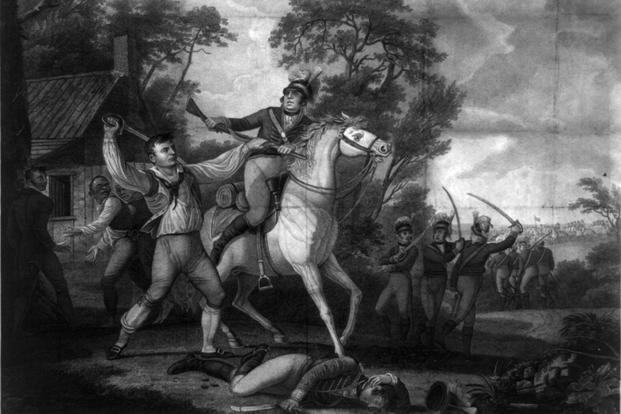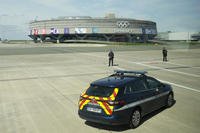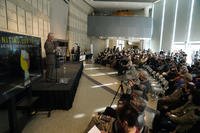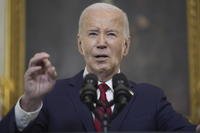The strapping young captain was on leave from the militia and had enjoyed an early summer evening at his father's tavern in Louisa County, Virginia. In the nighttime quiet of June 3, 1781, Jack Jouett reclined (some say dozed) on its wide lawn.
The sound of hoof beats broke the young man's reverie -- or sleep. As he watched in astonishment, Jouett saw a large unit of Col. Banastre Tarleton's British dragoons, led by "The Butcher" Tarleton himself, riding along the main Charlottesville road.
Jouett, a longtime patriot whose father "Commissary" Jouett supplied the militia, quickly realized the objective of the "whitecoats." The five-year-old Revolutionary War was at a stalemate, but the British had succeeded in driving the Virginia Assembly from its Richmond seat 70 miles west to Charlottesville. Its members included the illustrious Thomas Jefferson, fiery orator Patrick Henry and presidential ancestor Benjamin Harrison, among other luminaries.
With Tarleton and 170 men galloping toward them, the Virginia Assembly was virtually helpless. Most of Virginia's fighting men were up north with Gen. George Washington. Jouett knew he had to warn the assembly of the encroaching threat, but he faced a 40-mile ride over rain-roughened terrain and through thick backwoods.
Nevertheless, Jouett jumped on his thoroughbred and began his all-night dash to Jefferson's home, Monticello. Avoiding the main roads, he was forced to subject his face and his horse, Sallie, to cruel whipping from branches. In one portrait, he is depicted with scars that resulted from the lacerations.
At 4:30 a.m., the intrepid Jouett ascended Jefferson's hilltop, roused the company at Monticello and warned them of Tarleton's approach. He accepted a glass or two of Madeira from Jefferson, and then turned Sallie and galloped into Charlottesville to spread the alarm.
Jouett had single-handedly saved the Virginia Assembly from attack and imprisonment. For his bravery, the state presented him with a brace of pistols and a jeweled sword. They could not, however, assure him of the kind of fame Paul Revere won with his 1775 ride.
Want to Know More About the Military?
Be sure to get the latest news about the U.S. military, as well as critical info about how to join and all the benefits of service. Subscribe to Military.com and receive customized updates delivered straight to your inbox.














